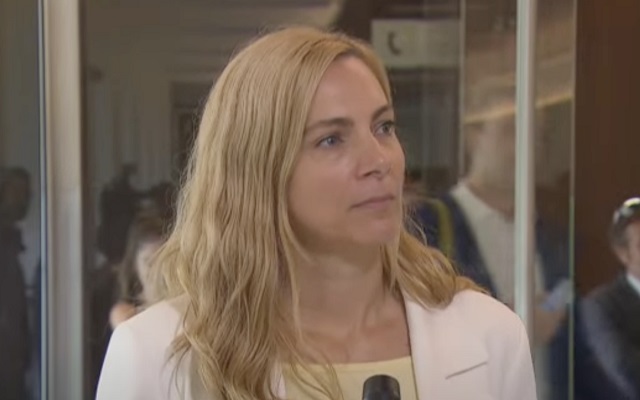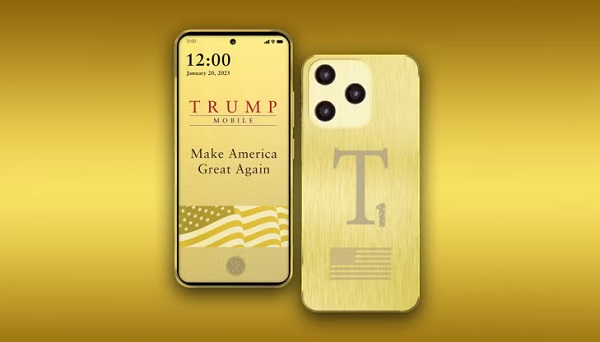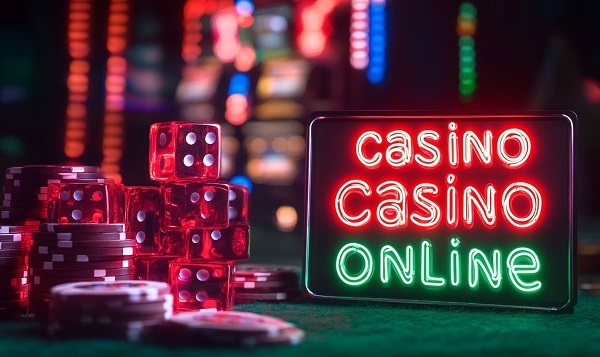Business
Trudeau gov’t dept. suggests giving LGBT, minority journalists $45k annually to promote ‘diversity’

Heritage Minister Pascale St-Onge
From LifeSiteNews
‘Organizations mentioned the need for government funds dedicated to creators and journalists from Indigenous, racialized and religious minority communities in the media’
The Canadian Department of Heritage is advising that Indigenous, Muslim, Black or LGBT identifying journalists be federally funded up to $45,000 per year to promote “diversity.”
According to a report titled Changing Narratives Fund Report On Consultations, published November 28 by Blacklock’s Reporter, the Department of Canadian Heritage has recommended that the Cabinet directly give individual reporters a salary of $45,000 annually.
“Organizations mentioned the need for government funds dedicated to creators and journalists from Indigenous, racialized and religious minority communities in the media,” said the report. “Funding should be stable and targeted.”
The proposed scheme, submitted by departmental advisors, professors Christopher Dornan and Adrian Harewood of Carleton University and Patrick White of the University of Québec, suggests “a salary of $45,000 per annum” for reporters who are Indigenous, Muslim, Black or LGBT.
“Hiring journalists and creators from diverse communities especially new talent alone cannot guarantee diverse perspectives will be presented in media coverage,” the report asserted. “If these new talents are not trained or allocated budgets or resources to share their stories they may well remain invisible.”
“For these stories to be seen a paradigm shift is needed in the way traditional news media share the stories of Indigenous, racialized and religious minority communities,” it continued.
“A number of organizations argued media coverage of the reality of their communities has not only been historically deficient but has often been detrimental,” the report alleged.
“Consequently the lack of regular and daily contact between majority and minority communities leads to misunderstanding of the other and worsens stereotypes and negative attitudes,” it added.
The report failed to explain how “diversity” of reporting could be maintained if the Liberal government under the leadership of Prime Minister Justin Trudeau is funding the journalists’ salaries.
The discriminatory proposal was not lost on Canadians, who took to social media to voice their concerns over the suggestion.
“Communism much??” one wrote on X, formerly known as Twitter.
Communism much??
— Slick Greg (@mrgregparsons) November 28, 2023
“Not even trying to hide the bribery anymore!” another posted.
Not even trying to hide the bribery anymore!
— Stephen M Lloyd 🇨🇦 🌻 (@StephenMLloyd2) November 28, 2023
“Government Approved Newsrooms are Pravda,” one wrote, referring to the official newspaper of the former Communist Party of the Soviet. “Government has no place in promoting narrative.”
Government Approved Newsrooms are Pravda … FULL STOP! Government has no place in promoting narrative.
— Sanitary Napping (@NilPointerFound) November 28, 2023
Notably, the call for increased federal funding for journalists closely follows Trudeau’s fall economic statement which includes massive payouts for mainstream media outlets ahead of and after the 2025 election.
Beginning in 2019, Parliament changed the Income Tax Act to give yearly rebates of 25 percent for each news employee in cabinet-approved media outlets earning up to $55,000 a year, to a maximum of $13,750.
However, the Canadian Heritage Department since admitted that the payouts are not sufficient to keep legacy media outlets running. The department recommended that rebates be doubled next year to a maximum $29,750 annually.
This suggestion was adopted by the Trudeau government in its Fall Economic Statement, which increased the rebates to 35 percent on newsroom salaries up to $85,000, totaling a maximum rebate of $29,750. The temporary tax credit is set to apply for the next four years.
While media subsidies were to set to expire March 31, 2024, they have now been expanded to 2029 past the next general election. The increased payouts are expected to cost taxpayer $129 million in the next five years and an additional $10 million for every subsequent year.
The renewed media bailouts come as trust in mainstream media is polling at an all-time low with Canadians.
According to a recent study by Canada’s Public Health Agency, less than a third of Canadians displayed “high trust” of the federal government, with “large media organizations” as well as celebrities getting even lower scores.
Large mainstream media outlets and “journalists” working for them scored a “high trust” rating of only 18 percent. This was followed by only 12 percent of people saying they trusted “ordinary people,” with celebrities garnering only an eight percent “trust” rating.
Business
Canada’s critical minerals are key to negotiating with Trump

From Resource Works
The United States wants to break its reliance on China for minerals, giving Canada a distinct advantage.
Trade issues were top of mind when United States President Donald Trump landed in Kananaskis, Alberta, for the G7 Summit. As he was met by Prime Minister Mark Carney, Canada’s vast supply of critical minerals loomed large over a potential trade deal between North America’s two largest countries.
Although Trump’s appearance at the G7 Summit was cut short by the outbreak of open hostilities between Iran and Israel, the occasion still marked a turning point in commercial and economic relations between Canada and the U.S. Whether they worsen or improve remains to be seen, but given Trump’s strategy of breaking American dependence on China for critical minerals, Canada is in a favourable position.
Despite the president’s early exit, he and Prime Minister Carney signed an accord that pledged to strike a Canada-US trade deal within 30 days.
Canada’s minerals are a natural advantage during trade talks due to the rise in worldwide demand for them. Without the minerals that Canada can produce and export, it is impossible to power modern industries like defence, renewable energy, and electric vehicles (EV).
Nickel, gallium, germanium, cobalt, graphite, and tungsten can all be found in Canada, and the U.S. will need them to maintain its leadership in the fields of technology and economics.
The fallout from Trump’s tough talk on tariff policy and his musings about annexing Canada have only increased the importance of mineral security. The president’s plan extends beyond the economy and is vital for his strategy of protecting American geopolitical interests.
Currently, the U.S. remains dependent on China for rare earth minerals, and this is a major handicap due to their rivalry with Beijing. Canada has been named as a key partner and ally in addressing that strategic gap.
Canada currently holds 34 critical minerals, offering a crucial potential advantage to the U.S. and a strategic alternative to the near-monopoly currently held by the Chinese. The Ring of Fire, a vast region of northern Ontario, is a treasure trove of critical minerals and has long been discussed as a future powerhouse of Canadian mining.
Ontario’s provincial government is spearheading the region’s development and is moving fast with legislation intended to speed up and streamline that process. In Ottawa, there is agreement between the Liberal government and Conservative opposition that the Ring of Fire needs to be developed to bolster the Canadian economy and national trade strategies.
Whether Canada comes away from the negotiations with the US in a stronger or weaker place will depend on the federal government’s willingness to make hard choices. One of those will be ramping up development, which can just as easily excite local communities as it can upset them.
One of the great drags on the Canadian economy over the past decade has been the inability to finish projects in a timely manner, especially in the natural resource sector. There was no good reason for the Trans Mountain pipeline expansion to take over a decade to complete, and for new mines to still take nearly twice that amount of time to be completed.
Canada is already an energy powerhouse and can very easily turn itself into a superpower in that sector. With that should come the ambition to unlock our mineral potential to complement that. Whether it be energy, water, uranium, or minerals, Canada has everything it needs to become the democratic world’s supplier of choice in the modern economy.
Given that world trade is in flux and its future is uncertain, it is better for Canada to enter that future from a place of strength, not weakness. There is no other choice.
Business
Rhetoric—not evidence—continues to dominate climate debate and policy

From the Fraser Institute
Myths, fallacies and ideological rhetoric continue to dominate the climate policy discussion, leading to costly and ineffective government policies,
according to a new study published today by the Fraser Institute, an independent, nonpartisan Canadian public policy think-tank.
“When considering climate policies, it’s important to understand what the science and analysis actually show instead of what the climate alarmists believe to be true,” said Kenneth P. Green, Fraser Institute senior fellow and author of Four Climate Fallacies.
The study dispels several myths about climate change and popular—but ineffective—emission reduction policies, specifically:
• Capitalism causes climate change: In fact, according to several environment/climate indices and the Fraser Institute’s annual Economic Freedom of the World Index, the more economically free a country is, the more effective it is at protecting its environment and combatting climate change.
• Even small-emitting countries can do their part to fight climate change: Even if Canada reduced its greenhouse gas emissions to zero, there would be
little to no measurable impact in global emissions, and it distracts people from the main drivers of emissions, which are China, India and the developing
world.
• Vehicle electrification will reduce climate risk and clean the air: Research has shown that while EVs can reduce GHG emissions when powered with
low-GHG energy, they often are not, and further, have offsetting environmental harms, reducing net environmental/climate benefits.
• Carbon capture and storage is a viable strategy to combat climate change: While effective at a small scale, the benefits of carbon capture and
storage to reduce global greenhouse gas emissions on a massive scale are limited and questionable.
“Citizens and their governments around the world need to be guided by scientific evidence when it comes to what climate policies make the most sense,” Green said.
“Unfortunately, the climate policy debate is too often dominated by myths, fallacies and false claims by activists and alarmists, with costly and ineffective results.”

Kenneth P. Green
Senior Fellow, Fraser Institute
-

 Business2 days ago
Business2 days agoCarney praises Trump’s world ‘leadership’ at G7 meeting in Canada
-

 conflict2 days ago
conflict2 days agoTrump leaves G7 early after urging evacuation of Tehran
-

 Business1 day ago
Business1 day agoThe CBC is a government-funded giant no one watches
-

 conflict1 day ago
conflict1 day agoMiddle East clash sends oil prices soaring
-

 Business2 days ago
Business2 days agoTrump family announces Trump Mobile: Made in America, for America
-

 Also Interesting2 days ago
Also Interesting2 days agoHow to Use Bonuses at Magius Casino and Similar Websites
-

 conflict1 day ago
conflict1 day agoTrump Threatens Strike on Khamenei as Israel Pounds Iranian Military Command
-

 Business1 day ago
Business1 day agoTrump makes impact on G7 before he makes his exit






